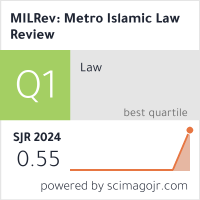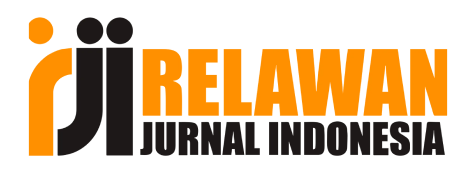The Digital Transformation of Tafsir and Its Implications for Islamic Legal Derivation in the Contemporary Era
DOI:
https://doi.org/10.32332/milrev.v4i1.10425Keywords:
AI in Qur'anic Studies, Digital Tafsir, Interpretation Methodology, Istinbath al-Ahkam.Abstract
The digitalization of Qur’anic interpretation has profoundly influenced the methodology of istinbat al-ahkam (deriving Islamic legal rulings), reshaping how scholars and legal institutions engage with classical texts in emerging digital platforms. This article explores the impact of selected tools—such as AI-driven tafsir platforms, semantic databases, and multimedia applications—on formulating Islamic legal reasoning in the digital era. Moving beyond a purely epistemological analysis, the study critically assesses how digital interfaces affect interpretive authority and methodological integrity and the production of contemporary legal responses to real-world issues, including Islamic digital finance, artificial intelligence ethics, and Sharia-based policymaking in digital environments. Utilizing a qualitative literature review combined with thematic content analysis, this research draws on classical sources and contemporary scholarship to investigate the shifting landscape of Islamic legal derivation in the digital age. Particular attention is given to the role of legal actors—such as fatwa councils, religious courts, and legislative bodies—in legitimizing or contesting digital tafsir outputs. The study applies maqasid al-shari’ah as developed by al-Shatibi as a normative framework to evaluate the legal-ethical implications of digital tafsir and its alignment with the objectives of protecting religion (din), intellect (‘aql), and public welfare (maslahah ‘ammah). Findings indicate that while digital tools significantly enhance accessibility, interactivity, and public engagement with Islamic texts, they also present challenges related to standardization, authenticity, and the erosion of traditional scholarly authority. This article offers a typology of digital influence—from functional assistance to epistemological disruption—and proposes practical pathways for integrating digital innovation within a framework of maqasid-oriented legal governance. The study contributes to the theoretical development of Islamic legal thought and the practical design of responsive, accountable, and ethically grounded legal frameworks for the digital era.
Downloads
References
Ahsan, Rizqi Hariz. “Model Penafsiran Digital Pada Platform Digital Quranreview: Instagram, YouTube, Spotify, Dan Website: Studi Resepsi Masyarakat Terhadap Platform Digital Quranreview,” 2024.
Ali, Zainuddin. Metode Penelitian Hukum. Sinar Grafika, 2021.
Asaad, Misbahuddin. “Wacana Saintifik Hadis Dalam Konstruksi Kesahihan Hadis.” Tahdis: Jurnal Kajian Ilmu Al-Hadis 13, no. 2 (2022): 98–120.
Athar, Mohamad. “Corak Penafsiran Ayat-Ayat Al-Qur’an Yang Terkonfirmasi Oleh Fakta Ilmiah Modern: Kajian Komparatif.” MODELING: Jurnal Program Studi PGMI 11, no. 1 (2024): 1274–1309.
Atikah, Ika. Metode Penelitian Hukum, 2022.
Azizah, Siti Nur Lailatul, and others. “Eksplorasi Tafsir Digital: Studi Komparatif Atas Tafsir.Web.Id Dan Tafsirq.Com.” Canonia Religia 1, no. 2 (2024): 209–222.
Batubara, Chuzaimah, Mustapa Khamal Rokan, Muhammad Firdaus Bin Abdul Manaf, Sukiati Sukiati, and Isnaini Harahap. “Realizing Justice and Maslahah in E-Commerce: Fiqh Muamalah Insights and Challenges in Malaysia and Indonesia.” JURIS (Jurnal Ilmiah Syariah) 23, no. 2 (September 10, 2024): 253. https://doi.org/10.31958/juris.v23i2.12356.
Dermawan, Herman. “Peran Media Sosial Dalam Pembentukan Narasi Islam Di Dunia Digital.” Andragogia: Journal Education Science And Islamic Studies 1, no. 1 (2024): 21–30.
Dkk, Sukindar. “Legal Innovation in Religious Courts: The Potential Utilization of Artificial Intelligence (AI) in Resolving Contemporary Cases.” MILRev : Metro Islamic Law Review 03, no. 2 (2024): 388–410. https://doi.org/10.3176/chem.geol.1975.2.10.
Fauzi, A. “Peran Media Sosial Dalam Penyebaran Tafsir Al-Qur’an.” Jurnal Komunikasi Islam 5, no. 1 (2020): 67–80.
Hairul, Moh Azwar. “Tafsir Al-Qur’an Di YouTube.” Al-Fanar: Jurnal Ilmu Al-Qur'an Dan Tafsir 2, no. 2 (2019): 197–213.
Ibrahim, Muhammad Ali Amin. “Tantangan Sosial Dan Etika Modern Dalam Perspektif Tafsir Taisirul at Tafsir Karya Abdul Jalil Isa.” Taqrib: Journal of Islamic Studies and Education 2, no. 2 (2024): 61–73.
Ja'far, Ali. “Literasi Digital Pesantren: Perubahan Dan Kontestasi.” Islamic Review: Jurnal Riset Dan Kajian Keislaman 8, no. 1 (2019): 17–35.
Junaidi, Ahmad. “Syahadah Rukyatulhilal Using Astro Digital Imaging: From Subjectivity to Objectivity.” De Jure: Jurnal Hukum Dan Syar’iah 14, no. 1 (June 29, 2022): 58–74. https://doi.org/10.18860/j-fsh.v14i1.15062.
Kurniawan, Agung, and Hamsah Hudafi. “Konsep Maqashid Syariah Imam Asy-Syatibi Dalam Kitab Al-Muwafaqat.” Al-Mabsut: Jurnal Studi Islam Dan Sosial 15, no. 1 (2021): 29–38.
Maizal, arif zunzul. “Tafsir Fikih Dalam Khazanah Penafsiran Alquran Arif Zunzul Maizal.” Intitut Agama Islam Negri Batusangkar 19, no. 01= (2020): 124. https://www.academia.edu/90703244/Tafsir_Fikih_Dalam_Khazanah_Penafsiran_Alquran.
Majid, Abd Hamid. “Etika Komunikasi Di Era Digital Perspektif Al-Qur’an: Studi Penafsiran Sufistik Ibnu ’Ajibah Dalam Al-Bah,” n.d.
Mardiya, Zakiyatul, and Ainur Rofiq Sofa. “Keutamaan Menuntut Ilmu Dalam Perspektif Islam Di Kehidupan Modern: Tantangan, Peluang, Dan Pengaruh Teknologi Dalam Pembentukan Karakter Di Era Digital.” Inspirasi Dunia: Jurnal Riset Pendidikan Dan Bahasa 4, no. 1 (2025): 13–26.
Mubarok, Muhamad Fajar, and Muhamad Fanji Romdhoni. “Digitalisasi Al-Qur’an Dan Tafsir Media Sosial Di Indonesia.” Jurnal Iman Dan Spiritualitas 1, no. 1 (2021): 110–114.
Munir, Misbahul, Achmad Musyahid, and Lomba Sultan. “Pemikiran Filosofis Abu Ishaq Al-Syatibi.” Quantum Juris: Jurnal Hukum Modern 6, no. 3 (2024).
Nafiza, Azka Zahro, and Zaenal Muttaqin. “Tafsir Al-Qur’an Di Media Sosial (Penafsiran Surah Al-Humazah Dalam Youtube Habib Dan Cing).” Mashdar: Jurnal Studi Al-Qur'an Dan Hadis 4, no. 2 (2022): 231–242.
Qamar, Nurul, and Farah Syah Rezah. Metode Penelitian Hukum: Doktrinal Dan Non-Doktrinal. CV. Social Politic Genius (SIGn), 2020.
Rahayu, Derita Prapti, M SH, and Sesi Ke. “Metode Penelitian Hukum.” Yogyakarta: Thafa Media, 2020.
Rasyid, Arbanur, Musda Asmara, and Maulana Arafat Lubis. “Strategi Jihad Digital Sebagai Upaya Perlawanan Informasi Negatif: Studi Metode Istihsan Pada Akun Instagram.” Al-Istinbath : Jurnal Hukum Islam 6, no. 2 (November 11, 2021): 409. https://doi.org/10.29240/jhi.v6i2.2797.
Reja, R, M Hasan, and N Hakimah. “Analisis Yuridis Terhadap Isbat Nikah Yang Akad Nikahnya Oleh Wali Hakim (Studi Penetapan Pengadilan Agama Nanga Pinoh)." Al-Usroh, 2022. http://e-journal.iainptk.ac.id/index.php/alusroh/article/view/706.
Santoso, Lukman, Agus Triyanta, and Jawahir Thontowi. “Halal Tourism Regulations in Indonesia: Trends and Dynamics in the Digital Era.” Ijtihad : Jurnal Wacana Hukum Islam Dan Kemanusiaan 22, no. 1 (August 1, 2022): 73–94. https://doi.org/10.18326/ijtihad.v22i1.73-94.
Sebyar, Muhamad Hasan. “Harmonization of Islamic Legal Institutions and Customary Law in Marriage Dispensation Cases at The Panyabungan Religious Court.” MILRev : Metro Islamic Law Review 2, no. 2 (2023): 155. https://doi.org/10.32332/milrev.v2i2.7809.
Setyawan, Edy, Muhammad Chairul Huda, Afif Muamar, Didi Sukardi, and Muhammad Feby Ridho Pangestu. “Legal Age for Marriage: SDGs and Maslahah Perspectives in Legal Policy Change in Indonesia.” Al-Manahij: Jurnal Kajian Hukum Islam 17, no. 2 (September 22, 2023): 183–98. https://doi.org/10.24090/mnh.v17i2.9506.
Shofiyani, Amrini, Aufia Aisa, and Laily Mufarrohah. Ilmu Hadits. Lembaga Penelitian dan Pengabdian kepada Masyarakat Universitas KH. A. Wahab, 2023.
Soekanto, Soejono. Metode Penelitian Hukum, 2003.
Srimulyo, Koko, Yula Anggriani, and Faizal Kurniawan. “The Utilization Of Access Management To Digital Collections: Requirements & Challenges By Law.” Jurnal Hukum Unissula 40, no. 1 (2024): 204–22. https://doi.org/10.26532/jh.v40i1.38665.
Syaifudin, Mokhamad. Integrasi Teknologi Dalam Pembelajaran Di Kelas, 2021.
Syamsuar, Syamsuar, Ahmad Omar Chapakia, Amrizal Hamsa, and Amelia Amelia. “Integration of Maqashid Syaria in Nurcholish Madjid's Thingking about Principles for Effective Good Governance.” Al-Istinbath: Jurnal Hukum Islam 9, no. 1 (2024): 45–62. https://doi.org/10.29240/jhi.v9i1.9701.
Wijaya, Dina Sakinah, and Nurul Fitri Habibah. “Periwayatan Hadis Nabi (Tahammul Wal Ada’), Ilmu Jarh Wa Ta’dil Dan Ilmu Nasikh Mansukh Dalam Hadis.” El-Sunnah: Jurnal Kajian Hadis Dan Integrasi Ilmu 5, no. 1 (2024): 23–32.
Yaqin, Ainol, Wardi Moch. Cholid, and Mulyadi Achmad. “Actualization of Moderation in Reasoning at Ma ’ Had Aly Salafiyah Syafi ’ Iyah Sukorejo Situbondo and Its Influence on Istinbath of Islamic Law Achmad Mulyadi Abstract : Keywords : Abstrak.” Al-Ihkam: Jurnal Hukum Dan Pranata Sosial, 17, no. 2 (2022): 434–57. http://ejournal.iainmadura.ac.id/index.php/alihkam/article/view/5962/3296.
Yuningsih, Hartati, and Abdul Ghany. “Transformasi Tafsir Al-Qur’an Di Era Media Digital: Analisis Metodologi Tafsir Dalam Channel Youtube Kajian Tafsir Al-Ma’rifah.” Al-Qudwah 2, no. 2 (2024): 187–204.
Zahra, Nafisatuz. “Transformasi Tafsir Al-Qur’an Di Era Media Baru: Berbagai Bentuk Tafsir Al-Qur’an Audiovisual Di YouTube.” Hermeneutik 12, no. 2 (2019): 32. https://doi.org/10.21043/hermeneutik.v12i2.6077.
Downloads
Published
Issue
Section
License
Copyright (c) 2025 Ali Sati, Abdul Halim, Abdul Hayy Nasution, Muhammad Ridwan

This work is licensed under a Creative Commons Attribution-ShareAlike 4.0 International License.










